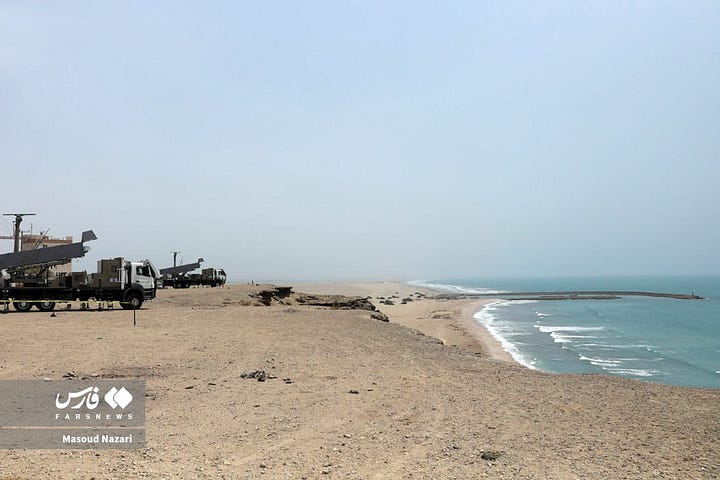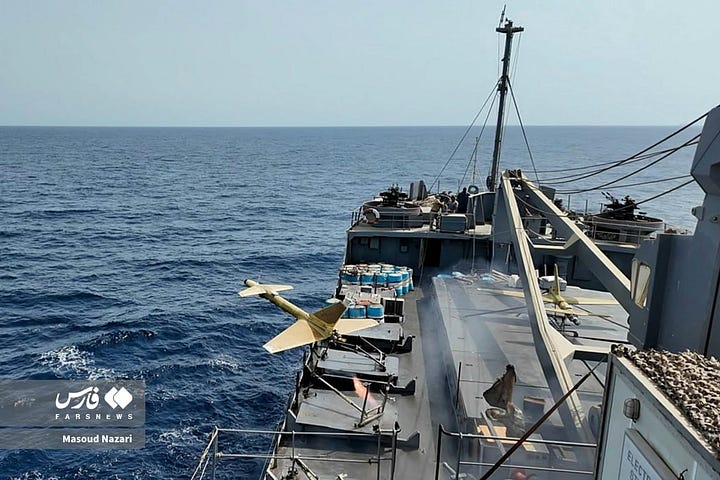Note: The following text was originally posted on my X/Twitter account.
Iran is currently undertaking a two-day naval exercise. Day 1 has been uneventful in terms of the systems and capabilities that have been publicly displayed—the full scope of the exercise is not, however, public knowledge. The naval balance in the Persian Gulf and Arabian Sea has been transformed over the past five or so years in ways that do not receive adequate attention. While this reflects in part developments in the military capabilities of Iran vis-a-vis the collective military capabilities of the United States and the Gulf Arab states (not necessarily to Iran's advantage), it is, for the most part, reflective of what is now a very limited presence of U.S. Navy ships in the Persian Gulf following the withdrawal of most American forces from Iraq and, more recently, the total withdrawal of American forces fom Afghanistan.




Simply stated, American aircraft carriers and large amphibious warships are no longer a regular presence in the confined waters of the Persian Gulf, and Iran's naval capabilities have to evolve in response to the unavailability of such lucrative "captive"—but extremely formidable—targets located within 300 or so kilometers from the Iranian coastline. While Iran's so-called sea denial capabilities in the Persian Gulf are often treated as a given, the situation is a lot more complex than it used to be, and there is a case to be made that the growth in Iran's naval—including maritime strike—capabilities has lagged well behind the growth in Iran's short-, medium-, and long-range terrestrial strike capabilities, which are afforded by its long-range guided artillery rockets, ballistic missiles of various types and range classes, cruise missiles, and propeller-driven strike drones of various types. It is important to note that there is some overlap between Iran's terrestrial strike and maritime strike munitions.
While there is a lot more to fielded military capabilities than the technical particulars of munitions and other military systems, it is nevertheless worth noting the capability areas that do not appear to have been displayed or tested on the first day of the ongoing naval exercise:
Iran's very slowly evolving submarine force.
Iran's reportedly operational supersonic anti-ship cruise missile.
The use of Iran's expanding array of loitering strike drones in maritime strike roles.
To match evolving adversary capabilities and advances in naval technology more generally, Iran needs to significantly enhance its maritime strike capabilities. The systems and capabilities that have been publicized on day 1 of the ongoing two-day naval exercise are, however, little different than what Iran deployed throughout the 2010s. With the credibility of Iran's terrestrial strike capabilities undermined following the two single-day operations against Israel in 2024 and the June 2025 Iran-Israel War, Iran will likely have to heavily lean on its naval capabilities to coerce and deter its adversaries. That will likely require a major qualitative expansion of naval and maritime strike capabilities that Iran has not publicly displayed so far.

